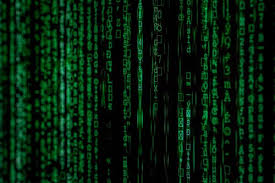The Impact of Physical Security

What is Physical Security
Physical security refers to the protection of physical items, objects, or areas of unauthorized access and misuse. In cybersecurity, physical security includes the physical location of office space and company assets like servers, computers and other devices on a network. Cybersecurity professionals develop policies and procedures for handling threat agents which compromise physical security systems that may be an internal or external threat effecting a company’s assets.
Extreme Temperature
Extreme temperature refers to the interference of weather on daily business operations, including overwhelming heat and cold. If companies do not monitor the temperature in a physical building, it may create unbearable working conditions for its employees and a damaging effect on business technologies. In some cases, extreme temperature can manifest as a natural disaster that threatens the physical security of company assets. Through strategic planning, chief security officers and cybersecurity professionals devise risk management and incident response plans in order to protect company assets during extreme temperature.
Gases
Gases refer to war gases, commercial vapors, humid or dry air, and suspended particles. Chief security officers develop plans for the effective use of gas at an organization, which details policies and procedures for handling an event in which gas may not be handled appropriately. The mismanagement of gas could lead to threats manifested as potential explosions, fires and other hazards which may affect daily business operations and protection of company assets. Gas can be one the most damaging aspects of physical security; therefore, chief security officers develop plans for its management and use in a secure manner within company policies.
Liquids
Liquids include water and chemicals. Potential threats may arise in which company assets become exposed to excess amounts of water and chemicals. Flooding due to extreme weather conditions can impact a company by restricting access to company assets. Excess chemicals may become a detriment to employees and damaging to technology. These threats manifest as detrimental events when companies mismanage the use of liquids in the workplace or suffer from the attacks of a natural disaster.
Living Organisms
Living organisms include viruses, bacteria, people animals and insects. These organisms can cause employees to become infected by illnesses that prevent them from working at a physical location. Threats manifest as attacks when the mismanagement of viruses and bacteria, as well as organisms from nature, interact with employees which causes them to become ill.
Projectiles
Projectiles include tangible objects in motion and powered objects. These threats can occur from both internal and external agents. They usually manifest as an item being launched in the direction of a company asset, damaging or destroying it in the process. One of the main goals of physical security in relation to technology, concerns the company’s ability to protect servers from contact by unauthorized individuals. An internal or external threat agent looking to inflict damage to an organization could launch a projectile at the server and most likely affect the company’s ability to function. Effective physical security policies prevent such damage to company assets by restricted access to authorize individuals only, and using technologies that provide physical protection such as alarm systems and locked doors.
Energy
Energy anomalies refer to electrical surge or failure, magnetism, static electricity, aging circuitry; radiation: sound, light, radio, microwave, electromagnetic and atomic. Threats often occur when chief security officers refrain from ensuring buildings remain up to code in terms of its electrical devices. These threats can be manifested as accidental interaction between employees and faulty electrical equipment, which can lead to serious injuries in the workplace. Sound security policies detail effective methods of handling energy anomalies in a secure manner, which reduces the risk of employees enduring any injuries.

